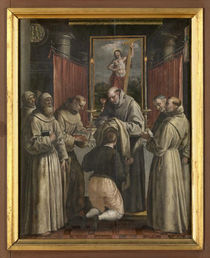The Catholic Defender: Assumption of the Blessed Virgin Mary
- Donald Hartley

- Aug 14
- 2 min read
Updated: Aug 14
Deepertruth with special permission and aid with Franiciscan Media, a great team for the Lord

Assumption Day commemorates the belief that when Mary, the mother of Jesus Christ, died, her body was "assumed" into heaven to be reunited with her soul, instead of going through the natural process of physical decay upon death.
At her Assumption, she is said to enter 'into heavenly glory'. Revelation 12 St. John gives a poetic description of these facts.
According to ancient Jewish custom, Mary could have been betrothed at about 12. Her age during her pregnancy has varied up to 17 in apochyphal sources. Hyppolitus of Thebes says that Mary lived for 11 years after the death of her son Jesus, dying in 41 AD.
How old was Mary when Jesus took her to heaven?
Mary was 46 to 49 years old when Jesus died. Britannica states that she “flourished” from 25 B.C. to A.D. 75. Assuming this is in reference to her lifespan, according to Britannica, Mary was approximately 54 to 59 years old when Jesus died.
Mary sits enthroned in heaven on the right hand of Jesus Christ, who crowns her as “Queen of Heaven” in this 13th century apse mosaic in the Santa Maria Maggiore, Rome. After Jesus himself, his mother, Mary, is the most venerated figure in Christian history.
On November 1, 1950, Pope Pius XII defined the Assumption of Mary to be a dogma of faith: “We pronounce, declare and define it to be a divinely revealed dogma that the immaculate Mother of God, the ever Virgin Mary, having completed the course of her earthly life, was assumed body and soul to heavenly glory.”
The pope proclaimed this dogma only after a broad consultation of bishops, theologians and laity. There were few dissenting voices. What the pope solemnly declared was already a common belief in the Catholic Church.
We find homilies on the Assumption going back to the sixth century. In following centuries, the Eastern Churches held steadily to the doctrine, but some authors in the West were hesitant. However by the 13th century there was universal agreement. The feast was celebrated under various names—Commemoration, Dormition, Passing, Assumption—from at least the fifth or sixth century. Today it is celebrated as a solemnity.
Scripture does not give an account of Mary’s assumption into heaven. Nevertheless, Revelation 12 speaks of a woman who is caught up in the battle between good and evil. Many see this woman as God’s people. Since Mary best embodies the people of both Old and New Testaments, her assumption can be seen as an exemplification of the woman’s victory.
Furthermore, in 1 Corinthians 15:20, Paul speaks of Christ’s resurrection as the first fruits of those who have fallen asleep.
Since Mary is closely associated with all the mysteries of Jesus’ life, it is not surprising that the Holy Spirit has led the Church to believe in Mary’s share in his glorification. So close was she to Jesus on earth, she must be with him body and soul in heaven.





















Comments